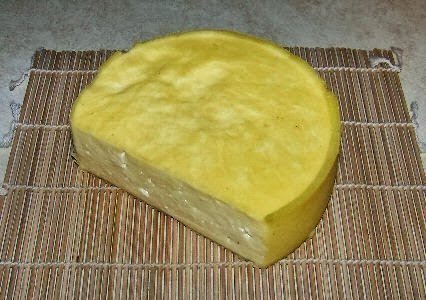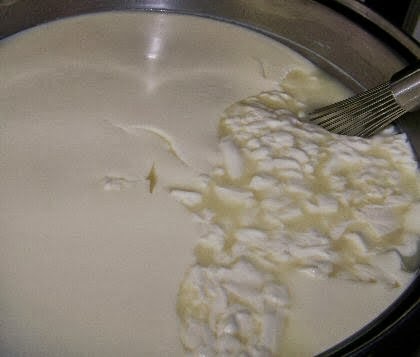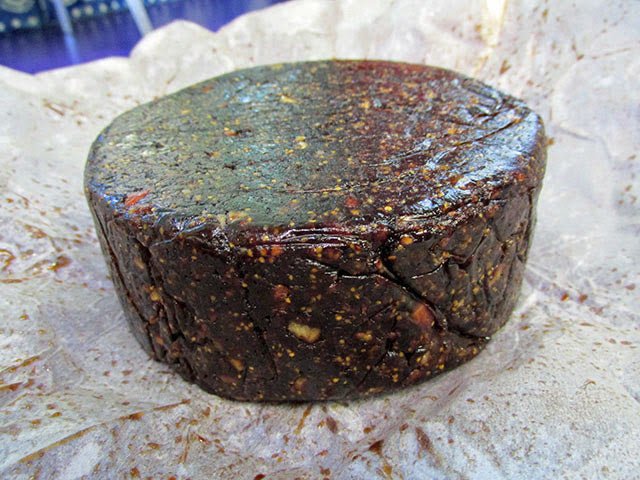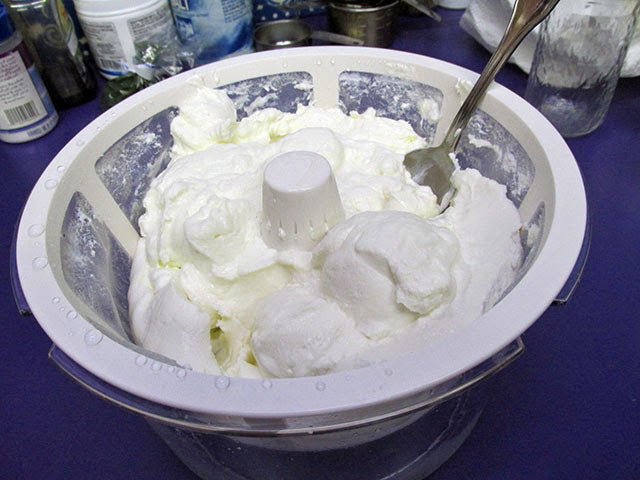 |
| Marci Blubaugh |
Mike and Marci Blubaugh have a farm in Martinsburg, Ohio called Amazing Graze. They sell grass fed beef and lamb, pastured broilers and turkeys, pork, eggs and some produce.
They also have a General Store on their website, AmazingGrazeFarm.com where they sell all kinds of kitchen supplies and books. They even offer classes for making Feta.
There is tons of good information on their website about all aspects of farm life, especially at the blog. This is where I found Marci’s post about making Cheddar. I love the way she uses a french fry mill to cut her slab of curds. You’ll see …
Cheddar Cheese
By Marci Blubaugh at Amazing Graze
Here is a picture of the cheese.
Equipment: Cheese pot with a lid to hold the milk (it is good to make this a dedicated cheese only pot), a larger stock pot or water bath canner, dairy thermometer, mesophilic starter culture, rennet, stainless steel whisk or long knife, cheese ladle, stainless steel colander, french fry mill/cutter, salt without iodine (you can use a coarse cheese salt, pickling salt, or I use Real Salt).
First of all fill your cheese pot with water. Put all your utensils that you will use in it and bring to a boil. This will sanitize all of your equipment and not cause problems with the cheese. Pour the boiling water into a larger stock pot or water bath canner. This will be used to heat the cheese and keep the temperature.
Pour 2 gallons of milk (this recipe can be doubled) into your cheese pot. Set the pot down into the larger stock pot or water bath canner. Place a thermometer down in the milk making sure it is easy to read. Let it heat up to 86° F.
The hot water in the bottom of the double boiler set up, was going to make the milk a bit too hot. I had to sit it out for a bit.
Once it reaches the right temperature put in your culture. Use 1 packet (1 packet works for up to 2 gallons of milk) of mesophilic starter culture. Sprinkle it over the top of the milk and stir in to the milk with a stainless steel whisk or cheese ladle. Cover and let sit for about 30 mins. to ripen.
If you are going to use calcium chloride, it would go in next. I did not use it, but it is good to use if the milk is homogenized and/or pasteurized. If you are going to use it, then take 1/2 tsp. and mix it in with about 1/4 cup of cold water. Pour the water over the surface of the milk and then stir it in.
Next, we will add our rennet. You will use the same amount of rennet in cheese as you use calcium chloride. So, add 1/2 tsp. of liquid rennet to about 1/4 cup of cool water. After mixing, pour over the surface of the milk and mix it in. Cover and let the milk sit for 30 to 50 mins. I leave my thermometer sticking out the side of the lid so I can make sure I keep a constant temperature.
It is time to test the curd. The last place to set up will be the center. I take a thick candy thermometer (you could use something else) and poke it down gently into the center of the curd and then sort of lift up at an angle. It the curd breaks in a clean straight line it is ready. In the picture below you can see the break, but the camera took the picture a split second too late (I know… operator error) so it is hard to see the totally clean line. However, you can see that it is solid curd.
Use the large stainless steel whisk to cut the curds. You can use a long knife, but it is SO much easier with a whisk. Cut across one way and then cut across the opposite way while turning the whisk a bit to make cubes.
In this picture you can see where I have cut with the whisk and where I still need to. The curds tend to rotate in the pot, so I never get perfectly even lines.
If you use a knife, after you cut both ways across, then you need to use a flat cheese ladle to cut the layers from top to bottom. Or insert the knife at angles to try and cut them. The whisk made all the difference in the world for me. I actually ordered some large ones to put in the store for others to be able to get them.
Once you cut the curds you are going to allow them to rest for 2 to 5 mins. They will sink down into the whey.
Leaving the pot of milk in the double boiler set up, turn a low heat on under the pot. You are going to raise the temperature of the milk from 86° F to 100° F. You are going to do this very slowly over a 40 to 45 mins. period of time.
You will need to stir the curds gently and often. I stirred with the whisk. Once the temperature hits 90° F and above, then the curds will try to mat together. You will need to be diligent in your stirring from that point on. Once you reach 100° F turn off the heat and watch that it does not get any hotter. If it does, remove it from the double boiler and set on the counter. It is good if you can keep them in the pot though because it helps keep the temperature constant. You are going to let the curds sit for 30 mins. undisturbed. They will sink to the bottom and mat together.
It is time to test and see if the curds are ready to be drained. Pull some up from the bottom in the flat cheese ladle. Take a small handful and gently squeeze. If they hold together then they are ready. They should also easily separate back out.
Drain them into a colander over a bucket or large pan catching the whey.
Put about 3 quarts of your whey back in the cheese pot and put the colander over that pot. Pack the curds down in the colander making a nice slab. Turn on a VERY low heat under this. The curds should not be in the whey, but they will be over the nice moist air. Put a lid over them and let them cheddar (that is what this process is called) for about 45 mins. to an hour. I turned the slab over pressing down again about every 15 mins.
When you are done, you will have a nice big flat smooth slab of cheese.
Put the slab on a cutting board and cut into fairly large chunks.
There are 2 ways to do this next step. You can use a knife or you can use a french fry mill/cutter. Put the curds through the mill or cut into strips about that size.
Put them back into the pan or into a bowl and add 2 1/2 tsp. of salt. Mix it in well with your hands. At this point, you can eat these as fresh cheese curds (they are really good) or you can press them into a wheel.
Lay a folded piece of cheese cloth on the bottom of your cheese press and then put the hoop on top of it. Fill the hoop with the curds. Place another folded piece of cheesecloth over the top of the curds and then add your follower (wooden round that fits just inside your hoop). Assemble the rest of your press and apply pressure to the curds. You do not want to push down as hard as you can at this point. Push down until the whey starts to come out the bottom. Depending on your press you will either want to set the press down into a pan to catch the whey or have a bowl to catch it. Leave it this way for an hour. Check it periodically to see if you need to apply a bit more pressure.
After the hour is up, take your cheese out and you will dress it. Take a piece of cheesecloth and wrap the cheese, covering all surfaces. Place it back into the hoop and add the follower. Now tighten your press to the maximum pressure. You will leave the cheese in the press for 24 hours.































































































































































